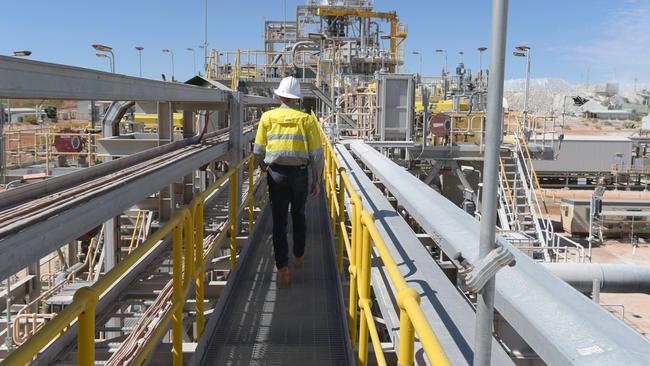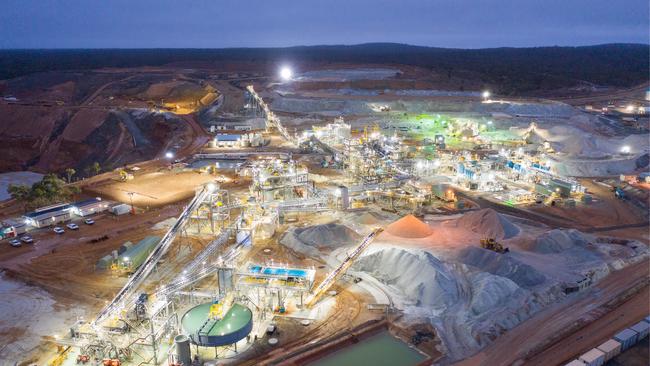Lithium ends 2023 on a high but next year promises a tougher outlook for the mineral’s hopefuls


Allkem’s merger with Livent marks the creation of a lithium company that can compete on the global scale, and Gina Rinehart’s decision to join with SQM in a bid for Azure Minerals offers a chance for speculative investors to cash out at a handy profit from the explorer. But the twin events could also signal the end of the latest round of hype in the lithium sector.
Lithium has had plenty of comparisons to the iron ore sector in recent months, as Gina Rinehart and Chris Ellison splashed the cash in an effort to buy controlling interests in the best of Western Australia’s lithium deposits.
But, with lithium prices well down on the extraordinary highs of 2022 and early 2023, the best comparison to the iron ore market is perhaps the situation in 2012, when prices tumbled and majors such as BHP and Rio Tinto abandoned the expensive expansion plans formed in the heady days of the boom. Instead they got down to the job of grinding down operating costs and adding incremental tonnes to the market to make sure they made money at any price.
The resurgent lithium market has allowed Australian producers to add scale and stabilise their operations over the last few years. A repeat of the lithium market crash of 2019 seems unlikely – but the price of lithium remains far more difficult to predict than that of iron ore and most other commodities.
But all of the current major producers face plenty of issues amid lower pricing.
Incoming IGO boss Ivan Vella needs to get a handle on the company’s nickel problems to stem the cash bleed at the company. Last year a flood of dividends, stemming from its 25 per cent ownership of the tier one Greenbushes mine in WA, covered most of the company’s sins in the nickel space.
But 2024 won’t see a repeat.
IGO said in its September quarter report that its partner, Tianqi, was stockpiling lithium concentrate at Greenbushes rather than putting it into a struggling market, flagging a 25 per cent drop in sales in the December quarter – with further production cuts possible in the new year if the market does not recover quickly.
At the same time IGO’s cash flow from the joint venture will be hit for its share of an estimated $850m to $950m worth of capital spending at the mine. The joint venture’s Kwinana lithium hydroxide refinery is still burning cash and nowhere near profitable production levels.
Pilbara Minerals is ramping up production at Pilgangoora, but also faces significant capital spending in the current financial year – up to $540m on growth projects, another $140m to $160m on mine development, and up to $190m on exploring other downstream growth projects.
MinRes has been splashing plenty of cash to buy up shares in junior lithium companies, but also needs to spend money to send its Mt Marion mine underground – and faces significant capital spending needs at its iron ore division, given the company’s plans for a new mining hub in the West Pilbara.
While Chris Ellison bristles at the suggestion of any pressure on the company’s balance sheet following MinRes’s $1.3bn trip to the US debt markets in October, there is surely a limit to how much available cash remains for speculative investments.
With $20bn in cash at the end of June and $5bn in annual cash flows, Hancock Prospecting has more money to deploy in the market than any other mining company around – including Rio Tinto and BHP.

But the key part of the peace deal cut over Azure is not the Christmas football being kicked around the trenches in the battle for control of WA’s best lithium deposits; it is the repeated use of the words “long term” in Hancock’s release announcing the deal. “In taking a long-term approach to project development, Hancock and SQM are uniquely placed to apply their significant project development expertise and manage the substantial challenges associated with progressing Andover,” the release says.
Hancock is clearly in no hurry to rush Andover into production, and a complicated joint venture structure – including SQM and possibly MinRes as shareholders, and Mark Creasy’s 40 per cent holding in the underlying deposit – suggests a careful approach will be required, as Hancock did with the Roy Hill iron ore mine.
The end of the last iron ore boom killed the hopes of plenty of WA hopefuls in the sector – companies such as Brockman Mining, Gindalbie Metals, Sundance Resources and Atlas Iron were once mining market darlings. All can trace their ultimate demise to the pullback that began in 2012.
Lithium bulls point to rising demand for electric batteries as a sign there’s plenty of room in the market for new players. But in 2012 rising steel demand in China was also a constant of the market.
Baosteel’s $1.4bn acquisition of Aquila Resources in 2014 was the last great buyout of Australia’s iron ore boom. It is only now – courtesy of MinRes – that Aquila’s tenements will begin to export iron ore.
It is always a fool’s errand to try to pick the top of any market, and lithium is more difficult than most. The coming year may tell us which lithium producer is the sector’s Fortescue, and which will fall by the wayside. And, in a decade or so, we could easily be looking back at Azure’s $1.7bn takeover valuation as the tipping point.
MinRes and Pilbara Minerals appear to have established an enduring place in the lithium market. Hopefuls such as Liontown and Core Lithium are aiming to repeat their success.
Fortescue and Atlas Iron did the same in iron ore, more than a decade ago.

Australia’s lithium sector has ended on a high after a grim back half to 2023 but, despite two contrasting deals topping off the year with a bit of froth and bubble, the industry now has to get down to doing the boring and difficult bit.